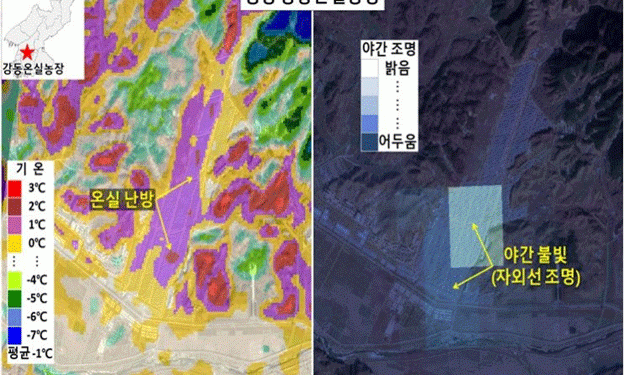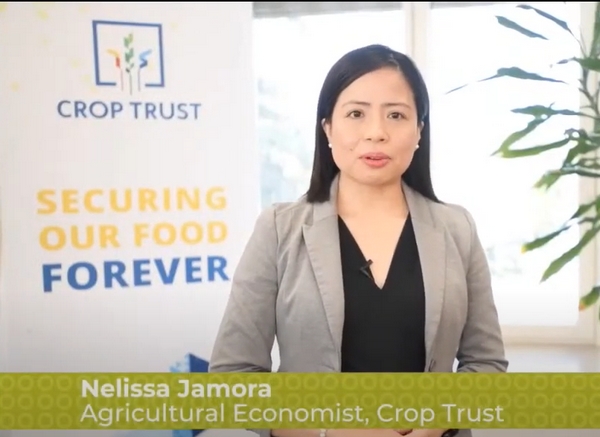North Korea boasts three massive greenhouse farms in Pyongyang, South Hamgyong, and North Hamgyong, often celebrated as key achievements by the regime. These facilities, designed for year-round crop production, face significant operational challenges in winter, particularly concerning heating and lighting. Satellite data from Landsat-8/9 and the VIIRS (Visible Infrared Imaging Radiometer Suite) system sheds light on their wintertime operations.
Pyongyang’s Gangdong Greenhouse Farm: A Showcase of Priority
Located in Gangdong County, Pyongyang, the Gangdong Greenhouse Farm is the most advanced among the three. Opened in March 2024 after just over a year of construction, it benefits from its location in the capital, ensuring consistent fuel and material supplies.
Thermal imaging from December 2023 revealed that Gangdong’s greenhouses maintained an average internal temperature of 0–1°C, with some areas reaching 3°C. This is a stark contrast to the external temperatures, which ranged from -7°C at night to 3°C during the day. The farm’s robust heating systems were evident in satellite imagery, with thermal hotspots visible across the facility.
Nighttime illumination data confirmed the use of ultraviolet (UV) lighting for crop growth, with bright, rectangular patterns indicating active lighting systems. This consistent lighting is essential for crop photosynthesis during the short daylight hours of winter.
South Hamgyong’s Yonpo Greenhouse Farm: Struggling with Heating
The Yonpo Greenhouse Farm in South Hamgyong Province, operational since October 2022, appears to face significant heating challenges. Thermal imaging from December 2023 showed an average temperature of -1°C, with parts of the facility barely reaching above freezing. This suggests inadequate heating, possibly due to fuel shortages or technical issues.
Nighttime satellite data revealed limited lighting activity, with faint illumination in parts of the facility. The farm’s suboptimal conditions highlight disparities in resource allocation between regions.
North Hamgyong’s Jungpyeong Greenhouse Farm: Stable but Uneven Heating
The Jungpyeong Greenhouse Farm, completed in 2019, demonstrated relatively stable heating operations. Satellite thermal data from December 2023 indicated internal temperatures averaging 1°C, with some areas reaching 3°C. However, nearby agricultural and facility zones recorded much colder temperatures, suggesting uneven resource distribution within the site.
Nighttime illumination was sporadic, with some areas showing faint UV lighting. Despite these inconsistencies, the farm’s heating systems appeared functional and sufficient for crop production during winter.
Insights and Implications
The disparity in performance among North Korea’s greenhouse farms reflects differences in regional support and infrastructure. Gangdong’s superior heating and lighting systems demonstrate the regime’s prioritization of Pyongyang as a showcase city. Meanwhile, farms in Yonpo and Jungpyeong struggle with heating inefficiencies and limited lighting, likely due to insufficient fuel or logistical constraints.
The heavy reliance on external heating and lighting underscores the high energy demands of operating large-scale greenhouses in cold climates. For countries or regions considering similar ventures, this case highlights the importance of robust energy infrastructure and resource management.
North Korea’s massive greenhouse farms illustrate both the potential and challenges of large-scale controlled-environment agriculture. While facilities like Gangdong demonstrate the benefits of prioritization and resource allocation, the struggles of Yonpo and Jungpyeong highlight the need for sustainable energy solutions and balanced regional support. Lessons from these operations may serve as valuable references for global agricultural projects aiming to optimize winter greenhouse performance.











